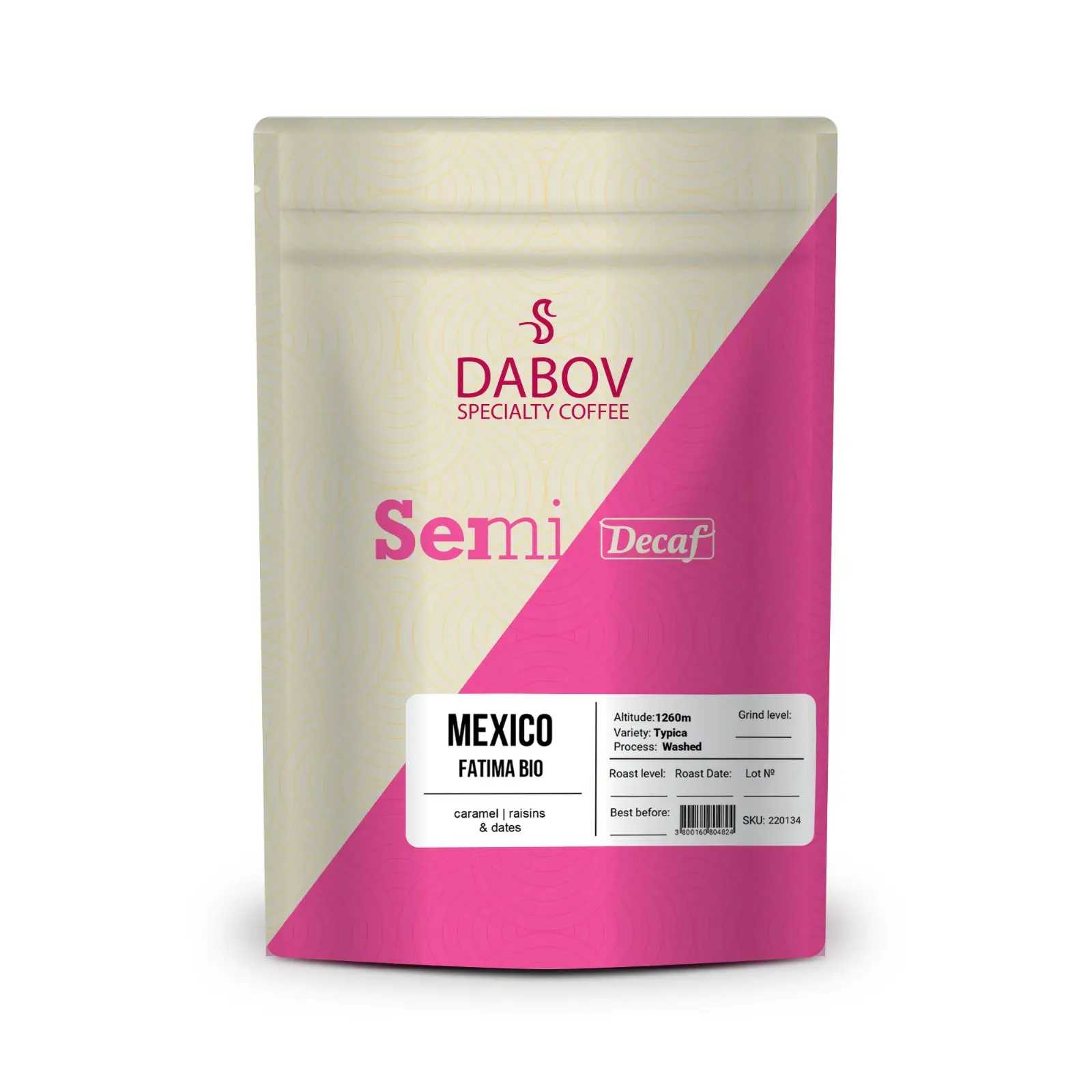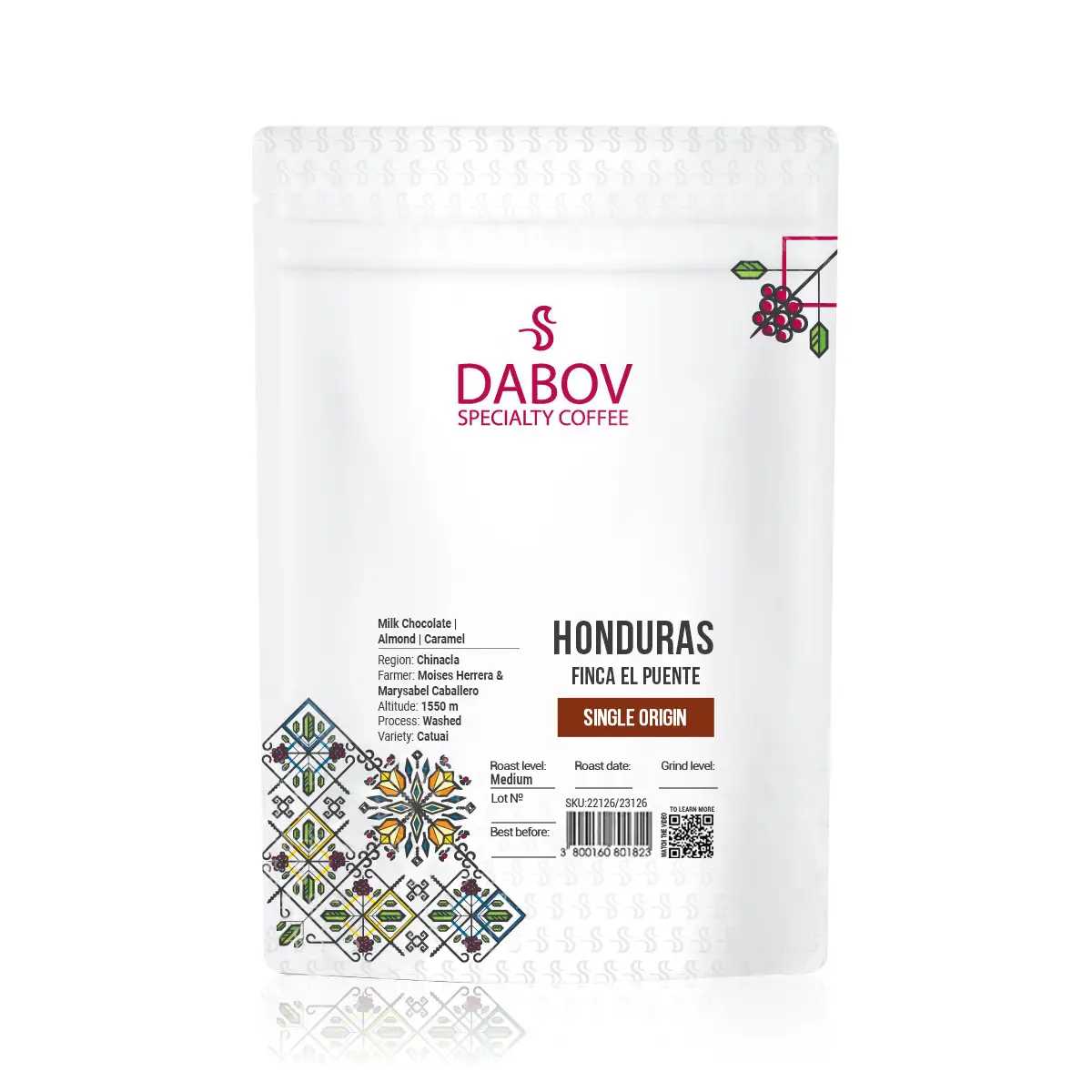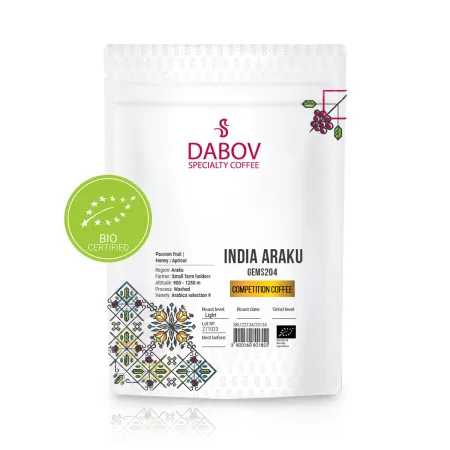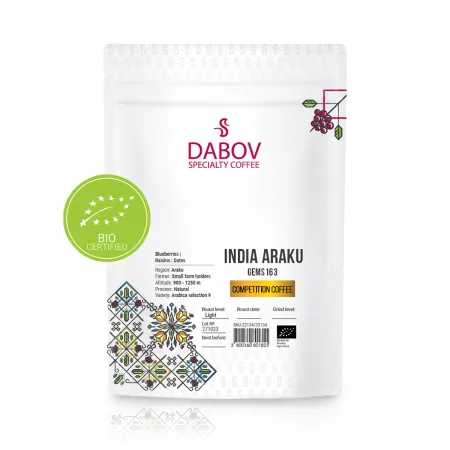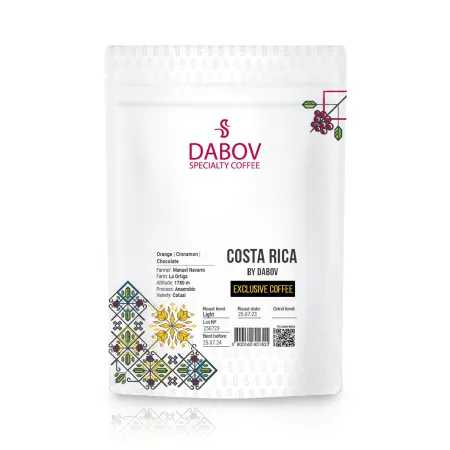EcoFriendly Coffee Processing Reducing Environmental Impact
Explore the critical role of eco-friendly coffee processing in tackling the coffee industry's environmental challenges. From deforestation to excessive water usage, the industry faces significant issues that threaten not only coffee production but the planet itself. This article delves into the essence of sustainable practices in coffee production, focusing on techniques that conserve resources, reduce waste, and promote biodiversity. Discover innovative water-saving technologies, the significance of organic farming, and how alternative processing methods can minimize ecological footprints. We'll also highlight community involvement, emerging technologies, and case studies demonstrating successful eco-friendly initiatives. Join us as we envision a sustainable future for the coffee industry, driven by consumer demand and supportive policies.
Introduction
Coffee, the aromatic elixir that fuels millions of people worldwide, has long been a staple of global culture and commerce. However, the coffee industry's environmental footprint has become increasingly concerning in recent years. From deforestation to excessive water usage, the production of our beloved brew has taken a toll on the planet. As consumers become more environmentally conscious, the importance of eco-friendly practices in coffee processing has never been more critical.
The coffee industry's environmental challenges are multifaceted and far-reaching. Deforestation, driven by the expansion of coffee plantations, has led to habitat loss and biodiversity decline in some of the world's most ecologically sensitive regions. Water usage in traditional coffee processing methods is often excessive, straining local water resources and contributing to pollution. Moreover, the industry's carbon footprint, from cultivation to transportation, has raised alarms among environmentalists and conscious consumers alike.
Eco-friendly coffee processing is not just a trendy buzzword; it's a vital approach to ensuring the long-term sustainability of coffee production and the preservation of our planet. By adopting sustainable practices, coffee producers can significantly reduce their environmental impact while often improving the quality of their product. This comprehensive exploration of eco-friendly coffee processing will delve into the intricacies of sustainable production techniques, innovative technologies, and the challenges and opportunities that lie ahead in the quest for a greener cup of joe.
Section 1: Understanding Eco-Friendly Coffee Processing
1.1 Definition of Eco-Friendly Coffee Processing
Eco-friendly coffee processing encompasses a holistic approach to coffee production that prioritizes environmental sustainability at every stage of the coffee lifecycle. This method goes beyond simply reducing waste or conserving resources; it involves a fundamental reimagining of how coffee is grown, harvested, processed, and distributed. At its core, eco-friendly coffee processing seeks to minimize negative environmental impacts while maximizing the positive contributions of coffee production to local ecosystems and communities.
The concept of eco-friendly coffee processing is intrinsically linked to the broader principles of sustainable agriculture and responsible resource management. It takes into account the entire coffee production chain, from seed to cup, considering factors such as soil health, water conservation, biodiversity preservation, and waste reduction. This approach recognizes that coffee production is not an isolated activity but part of a complex ecological and social system that requires careful stewardship.
In practice, eco-friendly coffee processing might involve using organic farming methods to eliminate harmful pesticides and fertilizers, implementing water-efficient processing techniques, utilizing renewable energy sources in processing facilities, and finding innovative ways to repurpose coffee byproducts. It also extends to fair labor practices and community development, acknowledging that environmental sustainability is closely tied to social and economic sustainability.
1.2 Key Principles of Eco-Friendly Processing
The core principles guiding eco-friendly coffee processing are rooted in a deep understanding of ecological systems and a commitment to long-term sustainability. These principles serve as a framework for decision-making and innovation in the coffee industry, driving the development of more sustainable practices and technologies.
Resource conservation is a fundamental principle of eco-friendly coffee processing. This involves minimizing the use of water, energy, and other inputs throughout the production process. For example, some eco-friendly coffee farms have implemented rainwater harvesting systems to reduce reliance on local water sources. Others have adopted solar-powered drying techniques, significantly cutting down on energy consumption during the crucial drying phase of coffee processing.
Waste reduction and circular economy principles are also central to eco-friendly coffee processing. This involves finding ways to reuse or repurpose coffee byproducts that would traditionally be discarded. For instance, coffee pulp, which is often considered waste in conventional processing, can be composted and used as a nutrient-rich fertilizer for coffee plants or other crops. Some innovative producers have even found ways to use coffee cherry husks in the production of cascara, a tea-like beverage that provides an additional revenue stream while reducing waste.
The promotion of biodiversity is another key principle, recognizing the vital role that diverse ecosystems play in supporting healthy coffee production. Eco-friendly coffee farms often employ agroforestry techniques, integrating coffee plants with native tree species to create a more diverse and resilient ecosystem. This approach not only provides habitat for local wildlife but can also improve soil health, reduce erosion, and even enhance the flavor profile of the coffee beans.
Soil conservation and improvement are also crucial aspects of eco-friendly coffee processing. Sustainable practices such as cover cropping, composting, and minimal tillage help maintain soil structure, increase organic matter content, and promote beneficial microbial activity. These practices not only support healthier coffee plants but also contribute to carbon sequestration, playing a small but significant role in mitigating climate change.
Water quality protection is another essential principle, given the significant water usage in traditional coffee processing methods. Eco-friendly processors implement water treatment systems to ensure that wastewater from coffee processing does not contaminate local water sources. Some have gone even further, developing innovative dry processing methods that dramatically reduce or eliminate water usage altogether.
Lastly, the principle of continuous improvement and innovation underpins all aspects of eco-friendly coffee processing. The coffee industry is constantly evolving, and new technologies and techniques are regularly emerging. Eco-friendly processors are committed to staying at the forefront of these developments, continuously seeking ways to further reduce their environmental impact and improve the sustainability of their operations.
Section 2: Sustainable Coffee Production Techniques
2.1 Overview of Sustainable Practices
Sustainable coffee production techniques form the backbone of eco-friendly coffee processing, encompassing a wide range of practices that aim to minimize environmental impact while maintaining or even improving coffee quality and yield. These techniques are not one-size-fits-all solutions but rather a toolkit of approaches that can be adapted to different geographical, climatic, and socio-economic contexts.
One of the foundational elements of sustainable coffee production is soil management. This involves practices such as intercropping, where coffee plants are grown alongside other crops to improve soil fertility and provide additional income streams for farmers. Cover cropping is another important technique, using plants like legumes to protect the soil from erosion, suppress weeds, and fix nitrogen in the soil. Composting and the use of organic fertilizers are also crucial, helping to build soil organic matter and reduce reliance on synthetic inputs.
Water management is another critical aspect of sustainable coffee production. This includes implementing efficient irrigation systems, such as drip irrigation, which can significantly reduce water usage compared to traditional flood irrigation methods. Rainwater harvesting and storage systems are also becoming increasingly common, helping farms to reduce their reliance on local water sources and better manage water resources during dry periods.
Integrated pest management (IPM) is a sustainable approach to pest control that minimizes the use of chemical pesticides. IPM strategies include biological control methods, such as introducing natural predators of coffee pests, as well as cultural practices like proper pruning and field sanitation to reduce pest populations. When pesticides are necessary, IPM emphasizes the use of targeted, low-toxicity products applied in a way that minimizes environmental impact.
Energy efficiency and renewable energy use are also key components of sustainable coffee production. This might involve using solar panels to power processing equipment, implementing energy-efficient machinery, or utilizing biogas digesters to convert coffee processing waste into energy.
Biodiversity conservation is another crucial aspect of sustainable coffee production. Many sustainable coffee farms maintain or restore native vegetation around their plantations, creating buffer zones that provide habitat for local wildlife and help protect water sources. Some farms have even established wildlife corridors to allow for the movement of animals between fragmented habitats.
Lastly, sustainable coffee production often involves social sustainability practices, recognizing that environmental sustainability is closely linked to the well-being of coffee-growing communities. This might include fair labor practices, community development initiatives, and efforts to improve local education and healthcare.
2.2 Water-Saving Technologies
Water-saving technologies are at the forefront of eco-friendly coffee processing, addressing one of the industry's most significant environmental challenges. Traditional coffee processing methods, particularly wet processing, can consume vast amounts of water, putting strain on local water resources and potentially contributing to water pollution. Innovative water-saving technologies are helping to dramatically reduce water usage while maintaining or even improving coffee quality.
One of the most promising water-saving technologies in coffee processing is the eco-pulper. This machine significantly reduces water usage in the de-pulping process, which traditionally involves using water to separate the coffee bean from the surrounding fruit. Eco-pulpers use mechanical force to remove the pulp, requiring only a fraction of the water used in traditional wet processing methods. Some advanced eco-pulpers can reduce water usage by up to 90% compared to conventional wet mills.
Closed-loop water systems represent another significant advancement in water-saving technology for coffee processing. These systems recirculate and treat water used in processing, allowing it to be reused multiple times. By implementing closed-loop systems, coffee processors can dramatically reduce their overall water consumption and minimize wastewater discharge. Some state-of-the-art facilities have achieved near-zero water waste through the implementation of these systems.
Dry fermentation is another water-saving technique gaining traction in the coffee industry. Traditional wet processing methods often involve fermenting coffee beans in water to remove the mucilage layer. Dry fermentation achieves the same result without submerging the beans in water, instead allowing naturally occurring microorganisms to break down the mucilage while the beans are held in tanks or bags. This method not only saves water but can also lead to unique flavor profiles in the finished coffee.
Advanced filtration and water treatment technologies are also playing a crucial role in water conservation efforts. These systems allow processors to clean and reuse water that would otherwise be discarded as waste. Some facilities have implemented constructed wetlands or biofilters, using natural processes to purify wastewater before it is released back into the environment or recycled for use in processing.
Precision irrigation systems are another important water-saving technology, particularly relevant to coffee cultivation. These systems use sensors and data analytics to deliver precisely the right amount of water to coffee plants at the right time, reducing overall water usage while optimizing plant health and yield. Some advanced systems even incorporate weather forecasting data to adjust irrigation schedules based on predicted rainfall.
2.3 Organic Farming and Certification
Organic farming practices play a crucial role in sustainable coffee production and are a cornerstone of many eco-friendly coffee processing operations. Organic coffee farming eschews the use of synthetic pesticides, herbicides, and fertilizers, instead relying on natural methods to manage pests, control weeds, and maintain soil fertility. This approach not only reduces the environmental impact of coffee production but can also lead to healthier ecosystems and potentially superior coffee quality.
The principles of organic coffee farming align closely with the broader goals of eco-friendly coffee processing. By avoiding synthetic chemicals, organic farms help preserve soil health, protect local water sources from contamination, and support biodiversity. Organic practices often involve the use of shade trees, which not only provide habitat for wildlife but can also improve coffee quality by slowing bean maturation and increasing sugar content.
Organic certification is a formal process that verifies a farm's adherence to organic standards. While specific requirements can vary by country and certifying body, organic certification typically involves a comprehensive assessment of farming practices, including soil management, pest control methods, and record-keeping procedures. The certification process often includes regular inspections and audits to ensure ongoing compliance with organic standards.
For coffee producers, obtaining organic certification can provide several benefits. Certified organic coffee often commands a price premium in the market, potentially increasing farmers' income. Certification can also open up new market opportunities, particularly among environmentally conscious consumers and specialty coffee buyers. Moreover, the rigorous standards required for organic certification can lead to improved farm management practices and potentially higher quality coffee.
However, it's important to note that the transition to organic farming can be challenging and time-consuming. It typically takes three years for a conventional coffee farm to be eligible for organic certification, during which time farmers may face yield reductions as the soil and ecosystem adjust to the absence of synthetic inputs. Support systems, such as training programs and financial assistance, are often crucial in helping farmers successfully transition to organic production.
Beyond traditional organic certification, there are also other eco-friendly certifications relevant to coffee production. These include Rainforest Alliance, Bird Friendly, and UTZ certifications, each with its own set of standards focusing on various aspects of environmental and social sustainability. Some coffee producers opt for multiple certifications to demonstrate their commitment to comprehensive sustainability practices.
Section 3: Reducing Coffee Impact Through Green Processing
3.1 Understanding the Coffee Supply Chain
The coffee supply chain is a complex network of interconnected stages, each with its own environmental implications. Understanding this chain is crucial for identifying opportunities to reduce environmental impact through green processing. The journey of coffee from seed to cup typically involves several key stages: cultivation, harvesting, processing, transportation, roasting, and brewing.
Cultivation is the first stage of the coffee supply chain, where environmental impact can be significant. Traditional coffee farming methods often involve deforestation to create sun-grown plantations, which can lead to soil erosion, loss of biodiversity, and increased carbon emissions. Green processing at this stage might involve implementing shade-grown coffee systems, which preserve tree cover and support biodiversity while producing high-quality coffee beans.
Harvesting is the next critical stage, traditionally done by hand to ensure only ripe cherries are picked. While hand-picking has a relatively low environmental impact, it's labor-intensive and expensive. Some larger farms use mechanical harvesters, which can be less selective but more efficient. Green processing innovations at this stage focus on developing more precise mechanical harvesting technologies that minimize damage to coffee plants and reduce energy consumption.
The processing stage, where the coffee cherry is transformed into green coffee beans ready for export, presents significant opportunities for reducing environmental impact. Traditional wet processing methods consume large amounts of water and can generate polluting wastewater. Green processing alternatives include water-efficient eco-pulpers, dry fermentation techniques, and closed-loop water systems that dramatically reduce water usage and minimize pollution.
Transportation is a major contributor to the coffee industry's carbon footprint, particularly when coffee is shipped long distances from producing countries to consuming markets. Green processing approaches in this stage might involve optimizing shipping routes, using more fuel-efficient vehicles, or even exploring alternative transportation methods like sail-powered cargo ships for ocean freight.
Roasting is an energy-intensive process that contributes to the coffee industry's overall carbon emissions. Green processing innovations in roasting include the development of more energy-efficient roasters, the use of renewable energy sources to power roasting facilities, and the implementation of heat recovery systems to capture and reuse waste heat from the roasting process.
The final stage, brewing, occurs at the consumer level but is still an important consideration in the overall environmental impact of coffee. Green processing approaches here might involve designing more energy-efficient coffee makers, promoting reusable filters and cups, and educating consumers on sustainable brewing practices.
By examining each stage of the coffee supply chain through the lens of green processing, it becomes clear that there are numerous opportunities to reduce the environmental impact of coffee production. From farm to cup, innovative technologies and sustainable practices are reshaping the coffee industry, paving the way for a more environmentally friendly future.
3.2 Alternatives to Traditional Processing Methods
Traditional coffee processing methods, while time-tested, often come with significant environmental costs, particularly in terms of water usage and waste generation. As the coffee industry moves towards more sustainable practices, several alternative processing methods have emerged that offer reduced environmental impact without compromising coffee quality.
Dry processing, also known as the natural method, is one of the oldest coffee processing techniques and is gaining renewed interest due to its low environmental impact. In this method, whole coffee cherries are dried in the sun or mechanical dryers immediately after harvesting. Once dry, the outer layers are mechanically removed to reveal the green coffee bean. This method uses virtually no water in processing, significantly reducing water consumption compared to wet processing. Additionally, dry processing can lead to unique flavor profiles, often characterized by fruity and complex notes that are highly valued in specialty coffee markets.
Honey processing is another alternative method that strikes a balance between wet and dry processing. In this technique, the skin of the coffee cherry is removed, but some or all of the mucilage is left on the bean during drying. This method uses less water than traditional wet processing but more than dry processing. Honey processing can produce coffees with a range of flavor profiles depending on how much mucilage is left on the bean, offering producers flexibility in crafting their coffee's taste while reducing water usage.
Anaerobic fermentation is an innovative processing method that has gained popularity in recent years. In this technique, coffee cherries or de-pulped coffee beans are sealed in airtight tanks, creating an oxygen-free environment that promotes specific types of fermentation. This method can be done with minimal water usage and allows for precise control over the fermentation process, potentially leading to unique and complex flavor profiles. From an environmental perspective, anaerobic fermentation can significantly reduce water usage and minimize the risk of water pollution associated with traditional wet processing methods.
Mechanical demucilaging is another water-efficient alternative to traditional wet processing. This method uses specialized machines to mechanically remove the mucilage from coffee beans after de-pulping, reducing or eliminating the need for fermentation tanks and washing channels. While this method does use some water, it typically requires significantly less than traditional wet processing. Mechanical demucilaging can also reduce processing time and labor requirements, potentially offering economic benefits alongside environmental ones.
Eco-pulping, as mentioned earlier, is a technology that dramatically reduces water usage in the de-pulping process. Advanced eco-pulpers can operate with minimal water input, sometimes using as little as 0.1 liters of water per kilogram of coffee cherries, compared to up to 20 liters in traditional wet processing. This technology not only conserves water but also reduces the volume of wastewater produced, minimizing the environmental impact of coffee processing.
These alternative processing methods demonstrate that it's possible to produce high-quality coffee while significantly reducing environmental impact. As these techniques continue to evolve and gain adoption, they promise to play a crucial role in the future of sustainable coffee production.
3.3 Waste Management and Byproduct Utilization
Effective waste management and innovative byproduct utilization are crucial aspects of eco-friendly coffee processing. The coffee industry generates significant amounts of organic waste, primarily in the form of coffee pulp, mucilage, and parchment. Traditionally, much of this waste was simply discarded, leading to environmental issues such as water pollution and greenhouse gas emissions from decomposing organic matter. However, forward-thinking coffee producers are now finding creative ways to manage this waste and even turn it into valuable resources.
Composting is one of the most common and effective methods of managing coffee processing waste. Coffee pulp and other organic byproducts can be composted to create nutrient-rich fertilizer for coffee plants or other crops. This not only reduces waste but also helps to close the nutrient cycle on coffee farms, reducing the need for synthetic fertilizers. Advanced composting techniques, such as vermiculture (using worms to break down organic matter), can accelerate the composting process and produce particularly high-quality compost.
Biogas production is another innovative way to utilize coffee processing waste. By using anaerobic digesters, coffee producers can convert organic waste into biogas, a renewable energy source that can be used to power processing equipment or provide electricity for local communities. The residue from biogas production, known as digestate, can also be used as a fertilizer, further reducing waste and creating additional value.
Some coffee producers are exploring the use of coffee pulp as a substrate for growing mushrooms. This not only provides an additional income stream but also creates a nutritious food product from what was once considered waste. After the mushrooms are harvested, the spent substrate can still be used as compost, maximizing the utilization of the original coffee byproduct.
In recent years, there has been growing interest in using coffee cherry husks to produce cascara, a tea-like beverage made from the dried skins of coffee cherries. This practice not only reduces waste but also creates a new value-added product for coffee farmers. Cascara has gained popularity in specialty coffee circles and is increasingly finding its way into mainstream markets, offering a promising avenue for byproduct utilization.
Some innovative companies are even using coffee byproducts in non-food applications. For example, coffee grounds have been used to create biodegradable plastics, textiles, and even building materials. While these applications are still in the early stages of development, they demonstrate the potential for coffee waste to be used in a wide range of industries.
Water recycling and treatment are also crucial aspects of waste management in coffee processing. Advanced water treatment systems can clean wastewater from coffee processing, allowing it to be safely released into the environment or even recycled for use in irrigation or processing. Some coffee producers have implemented constructed wetlands or biofilters to naturally purify wastewater, creating wildlife habitats in the process.
By implementing comprehensive waste management strategies and finding innovative ways to utilize byproducts, coffee producers can significantly reduce their environmental impact while potentially creating new revenue streams. These practices not only contribute to the sustainability of coffee production but also demonstrate the industry's potential to operate within a circular economy model, where waste is minimized and resources are used to their fullest potential.
Section 4: Innovations Driving Coffee Environmental Sustainability
4.1 Emerging Technologies in Coffee Processing
The coffee industry is experiencing a technological revolution, with emerging technologies promising to dramatically improve the environmental sustainability of coffee processing. These innovations span the entire coffee production chain, from cultivation to processing and beyond, offering new ways to reduce resource consumption, minimize waste, and improve overall efficiency.
Artificial Intelligence (AI) and Machine Learning (ML) are being increasingly applied in coffee production. These technologies can analyze vast amounts of data from various sources, including satellite imagery, weather stations, and soil sensors, to optimize irrigation, predict pest outbreaks, and determine the ideal harvesting time. For example, some farms are using AI-powered drones to monitor crop health and detect early signs of disease or nutrient deficiencies, allowing for targeted interventions that reduce the need for broad-spectrum pesticides or fertilizers.
Blockchain technology is another innovation making waves in the coffee industry. By creating an immutable record of each step in the coffee supply chain, blockchain can enhance traceability and transparency, allowing consumers to verify the sustainability claims of their coffee. This technology can also streamline supply chain operations, reducing waste and improving efficiency. Some coffee companies are experimenting with blockchain-based systems that allow consumers to directly tip farmers, providing additional income to producers who implement sustainable practices.
Advanced sensor technologies are revolutionizing coffee processing. New types of sensors can monitor various aspects of the fermentation process in real-time, allowing for precise control over factors like temperature, pH, and sugar content. This level of control can lead to more consistent quality and reduced waste. Some processors are even using electronic "noses" that can detect subtle changes in aroma during roasting, allowing for more precise and efficient roasting processes.
Nanotechnology is beginning to find applications in coffee production as well. Nano-sensors can detect minute changes in soil composition or plant health, allowing for highly targeted application of nutrients or pest control measures. Some researchers are exploring the use of nano-materials in coffee packaging to extend shelf life and reduce waste.
3D printing technology is being used to create custom parts for coffee processing equipment, allowing for more efficient repairs and reducing the need for replacement of entire machines. This can extend the lifespan of processing equipment and reduce waste. Some innovators are even exploring the use of 3D printing to create novel coffee brewing devices that are more energy-efficient than traditional methods.
Renewable energy technologies are also playing an increasingly important role in sustainable coffee processing. Solar-powered coffee dryers are becoming more common, reducing reliance on fossil fuels or wood for drying coffee beans. Some processors are experimenting with using coffee chaff (a byproduct of roasting) as a biofuel, creating a closed-loop energy system for roasting operations.
These emerging technologies demonstrate the coffee industry's potential for innovation in pursuit of greater sustainability. As these technologies continue to develop and become more accessible, they promise to play a crucial role in reducing the environmental impact of coffee production while potentially improving quality and efficiency.
4.2 Case Studies of Eco-Friendly Coffee Producers
Examining real-world examples of eco-friendly coffee producers provides valuable insights into the practical application of sustainable practices and their impacts. These case studies showcase the diversity of approaches to sustainable coffee production and demonstrate the tangible benefits of eco-friendly practices.
One notable example is Finca El Ocaso, a coffee farm in Colombia that has implemented a comprehensive approach to sustainability. The farm uses a variety of eco-friendly practices, including shade-grown coffee cultivation, organic farming methods, and water-efficient processing techniques. They have implemented a closed-loop water system that recycles water used in coffee processing, dramatically reducing their water consumption. The farm also maintains significant areas of native forest, supporting local biodiversity. As a result of these practices, Finca El Ocaso has seen improvements in coffee quality, reduced production costs, and increased resilience to climate change impacts.
In Ethiopia, the birthplace of coffee, the Oromia Coffee Farmers Cooperative Union (OCFCU) provides an excellent example of how sustainable practices can be implemented at scale. The OCFCU represents over 300 cooperatives and more than 350,000 farmer members. They have implemented organic farming practices across vast areas, promoting biodiversity conservation and soil health. The union has also invested in eco-friendly processing facilities, including water-efficient wet mills and solar dryers. These efforts have not only reduced environmental impact but have also improved coffee quality and increased farmers' incomes through access to premium markets for sustainably produced coffee.
In Costa Rica, Coopedota, a cooperative of coffee farmers, has achieved carbon neutral certification, becoming one of the first coffee producers in the world to do so. They achieved this through a combination of emissions reduction strategies and carbon offsetting. The cooperative implemented energy-efficient processing equipment, used coffee pulp as biofuel, and invested in reforestation projects. They also developed a program to help member farmers implement sustainable practices on their farms. As a result of these efforts, Coopedota has not only reduced its environmental impact but has also seen increased demand for its coffee from environmentally conscious buyers.
In Brazil, Daterra Coffee provides an example of how large-scale coffee production can be made more sustainable. The company has implemented a range of eco-friendly practices across its vast estates, including precision agriculture techniques that optimize resource use, extensive water recycling systems, and biodiversity conservation efforts. Daterra has also invested heavily in research and development, working on projects such as developing drought-resistant coffee varieties and improving processing technologies. Their efforts have resulted in significant reductions in water and energy use, as well as improvements in coffee quality and yield.
These case studies demonstrate that eco-friendly coffee processing is not only environmentally beneficial but can also lead to improved coffee quality, increased market access, and enhanced resilience to climate change. They show that sustainable practices can be successfully implemented at various scales, from small family farms to large cooperatives and estates. Moreover, these examples highlight the importance of a holistic approach to sustainability, addressing environmental concerns alongside social and economic factors.
4.3 Community Involvement in Sustainable Practices
Community involvement is a crucial component of sustainable coffee production and eco-friendly processing. Engaging local communities not only enhances the effectiveness of sustainable practices but also ensures that the benefits of these practices are shared equitably. Moreover, community involvement can lead to innovative solutions that are tailored to local conditions and needs.
Education and training programs play a vital role in promoting community involvement in sustainable practices. Many successful eco-friendly coffee initiatives include comprehensive training programs for farmers and local community members. These programs cover topics such as organic farming techniques, water conservation methods, and sustainable waste management practices. By empowering community members with knowledge and skills, these programs ensure that sustainable practices are understood, adopted, and maintained over the long term.
Participatory decision-making processes are another important aspect of community involvement in sustainable coffee production. Some coffee cooperatives and organizations have implemented systems where farmers and community members have a say in sustainability initiatives. This might involve community meetings to discuss and decide on new eco-friendly practices, or the formation of farmer committees to oversee sustainability efforts. By involving the community in decision-making, these initiatives ensure that sustainability practices are culturally appropriate and aligned with local needs and values.
Many sustainable coffee projects also focus on creating additional income streams for local communities, recognizing that economic sustainability is closely linked to environmental sustainability. This might involve supporting the development of eco-tourism initiatives around coffee farms, promoting the production of other crops or products alongside coffee, or creating opportunities for community members to participate in value-added activities like coffee roasting or packaging.
Community-based monitoring programs are another effective way to involve local populations in sustainable practices. In these programs, community members are trained to monitor various aspects of environmental health, such as water quality or biodiversity levels. This not only provides valuable data for assessing the impact of sustainable practices but also fosters a sense of ownership and responsibility for environmental stewardship among community members.
Some innovative coffee projects have implemented community-managed payment for ecosystem services (PES) schemes. In these programs, farmers or communities are compensated for implementing practices that provide ecosystem services, such as carbon sequestration or watershed protection. These schemes provide a direct economic incentive for sustainable practices while recognizing the valuable role that coffee-growing communities play in environmental conservation.
Youth engagement is another important aspect of community involvement in sustainable coffee production. Many coffee-growing regions face challenges with young people leaving for urban areas, threatening the long-term sustainability of coffee farming. Some initiatives are addressing this by creating programs that engage young people in sustainable coffee production, teaching them about eco-friendly practices and entrepreneurship opportunities in the coffee sector.
Gender equity is also a crucial consideration in community involvement efforts. Women often play significant roles in coffee production but may be underrepresented in decision-making processes. Many sustainable coffee initiatives now include specific programs to empower women in coffee-growing communities, providing training, leadership opportunities, and support for women-led enterprises.
By prioritizing community involvement, sustainable coffee initiatives can ensure that eco-friendly practices are not just imposed from the outside but are embraced and championed by the communities themselves. This approach not only enhances the effectiveness and longevity of sustainable practices but also contributes to broader goals of social and economic development in coffee-growing regions.
Section 5: Challenges and Solutions in Eco-Friendly Coffee Processing
5.1 Main Challenges Faced by Coffee Producers
While the benefits of eco-friendly coffee processing are clear, coffee producers face numerous challenges in adopting and maintaining sustainable practices. Understanding these challenges is crucial for developing effective solutions and supporting the transition to more sustainable coffee production methods.
One of the primary challenges is the initial cost of implementing eco-friendly practices. Many sustainable technologies and methods require significant upfront investment, which can be prohibitive for small-scale farmers or cooperatives with limited financial resources. For example, installing water-efficient processing equipment or solar drying systems can involve substantial costs. Even transitioning to organic farming practices can be expensive, as it often involves a period of reduced yields as the farm ecosystem adjusts to the absence of synthetic inputs.
Knowledge and technical expertise present another significant challenge. Eco-friendly coffee processing often involves complex techniques and technologies that require specialized knowledge. Many farmers, particularly in remote areas, may lack access to information about the latest sustainable practices or may not have the technical skills to implement them effectively. This knowledge gap can lead to hesitation in adopting new methods or ineffective implementation of sustainable practices.
Market access and price premiums pose another challenge. While there is growing demand for sustainably produced coffee, many producers struggle to access these markets or to receive fair prices for their eco-friendly products. Certification costs can be prohibitive for small producers, and even when certified, there's no guarantee of finding buyers willing to pay premium prices. This uncertainty can make it difficult for producers to justify the additional costs and efforts associated with eco-friendly practices.
Climate change presents an ongoing and intensifying challenge for coffee producers. Changing weather patterns, increased frequency of extreme weather events, and shifts in suitable growing areas all complicate efforts to implement sustainable practices. Producers must not only adopt eco-friendly methods but also find ways to make their operations more resilient to climate impacts, adding another layer of complexity to sustainable coffee production.
Labor shortages are becoming an increasing concern in many coffee-growing regions. As younger generations move to urban areas in search of different opportunities, coffee farms are often left with an aging workforce. This can make it difficult to implement labor-intensive sustainable practices or to train workers in new eco-friendly techniques.
Policy and regulatory environments can also present challenges. In some regions, policies may not support or may even hinder the adoption of sustainable practices. For example, regulations around water use or waste management may not be aligned with eco-friendly processing methods. Additionally, lack of government support or incentives for sustainable practices can make it difficult for producers to justify the transition.
Supply chain complexity is another significant challenge. Coffee often passes through many hands before reaching the consumer, making it difficult to ensure that sustainable practices are maintained throughout the supply chain. This complexity can also make it challenging to communicate the value of eco-friendly practices to end consumers, potentially limiting the market benefits of sustainable production.
Balancing sustainability with productivity is an ongoing challenge for many producers. While eco-friendly practices can often lead to improved coffee quality, they may sometimes result in lower yields, at least initially. Producers must find ways to maintain or increase productivity while implementing sustainable practices to ensure the economic viability of their operations.
These challenges highlight the complexity of transitioning to eco-friendly coffee processing. Addressing them requires a multi-faceted approach involving producers, industry stakeholders, policymakers, and consumers. By understanding and tackling these challenges, the coffee industry can continue to move towards more sustainable and environmentally friendly production methods.
5.2 Strategies for Overcoming Challenges
Addressing the challenges faced by coffee producers in adopting eco-friendly practices requires a multi-pronged approach involving various stakeholders across the coffee value chain. Here are some strategies that can help overcome these challenges and promote more widespread adoption of sustainable coffee processing methods:
Financial support and innovative funding mechanisms are crucial for overcoming the initial cost barriers of implementing eco-friendly practices. This could involve microfinance programs specifically designed for sustainable coffee initiatives, government subsidies for eco-friendly technologies, or impact investment funds focused on sustainable agriculture. Some organizations are exploring "pay-for-performance" models, where farmers receive financial incentives based on measurable improvements in sustainability metrics.
Knowledge sharing and capacity building programs can address the challenges related to technical expertise. This might involve establishing farmer field schools, where producers can learn about sustainable practices through hands-on experience. Digital platforms and mobile apps can also play a role in disseminating information about eco-friendly techniques, allowing farmers to access expert advice even in remote areas. Peer-to-peer learning networks, where farmers can share experiences and best practices, have also proven effective in many regions.
Improving market access for sustainably produced coffee is essential. This could involve developing direct trade relationships between producers and roasters, creating dedicated market channels for eco-friendly coffee, or establishing regional branding initiatives that highlight sustainable production methods. Some organizations are working on blockchain-based traceability systems that can verify sustainability claims and potentially command higher prices in the market.
Certification support programs can help producers overcome the barriers to obtaining sustainability certifications. This might involve providing financial assistance for certification costs, offering guidance through the certification process, or developing group certification models that reduce costs for individual small-scale farmers.
Climate resilience strategies are crucial for addressing the challenges posed by climate change. This could involve developing and disseminating climate-resistant coffee varieties, implementing agroforestry systems that provide additional income streams and enhance farm resilience, or establishing early warning systems for extreme weather events. Some regions are exploring crop insurance programs specifically designed for sustainable coffee production.
Addressing labor shortages may involve initiatives to make coffee farming more attractive to younger generations. This could include training programs that emphasize the use of technology in sustainable coffee production, creating entrepreneurship opportunities within the coffee value chain, or developing community-based models that allow for shared labor and resources among small-scale producers.
Policy advocacy is important for creating a supportive regulatory environment for eco-friendly coffee processing. This might involve working with governments to develop policies that incentivize sustainable practices, such as tax breaks for eco-friendly technologies or payments for ecosystem services provided by sustainable coffee farms.
Supply chain collaboration is key to ensuring that sustainable practices are maintained throughout the coffee journey. This could involve establishing long-term partnerships between producers, traders, roasters, and retailers, with shared commitments to sustainability. Some companies are exploring vertical integration models, where they have direct control over multiple stages of the supply chain, allowing for more consistent implementation of sustainable practices.
Research and development investments can help in developing new technologies and practices that balance sustainability with productivity. This might involve partnerships between coffee producers, research institutions, and technology companies to develop innovations tailored to the specific needs of sustainable coffee production.
Consumer education initiatives can help create more demand for sustainably produced coffee, potentially driving up prices and making eco-friendly practices more economically viable. This could involve marketing campaigns that highlight the environmental benefits of sustainable coffee, or transparency initiatives that allow consumers to see the direct impact of their purchasing decisions.
By implementing these strategies, the coffee industry can work towards



